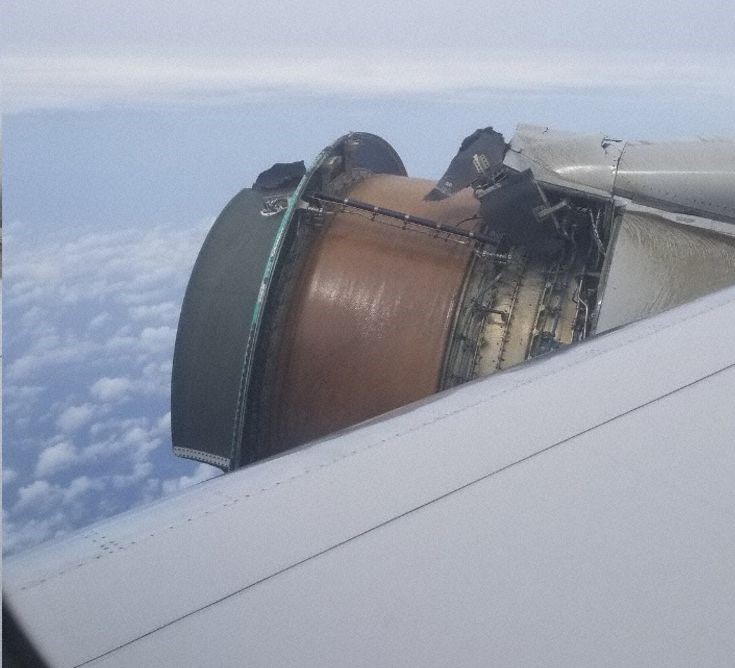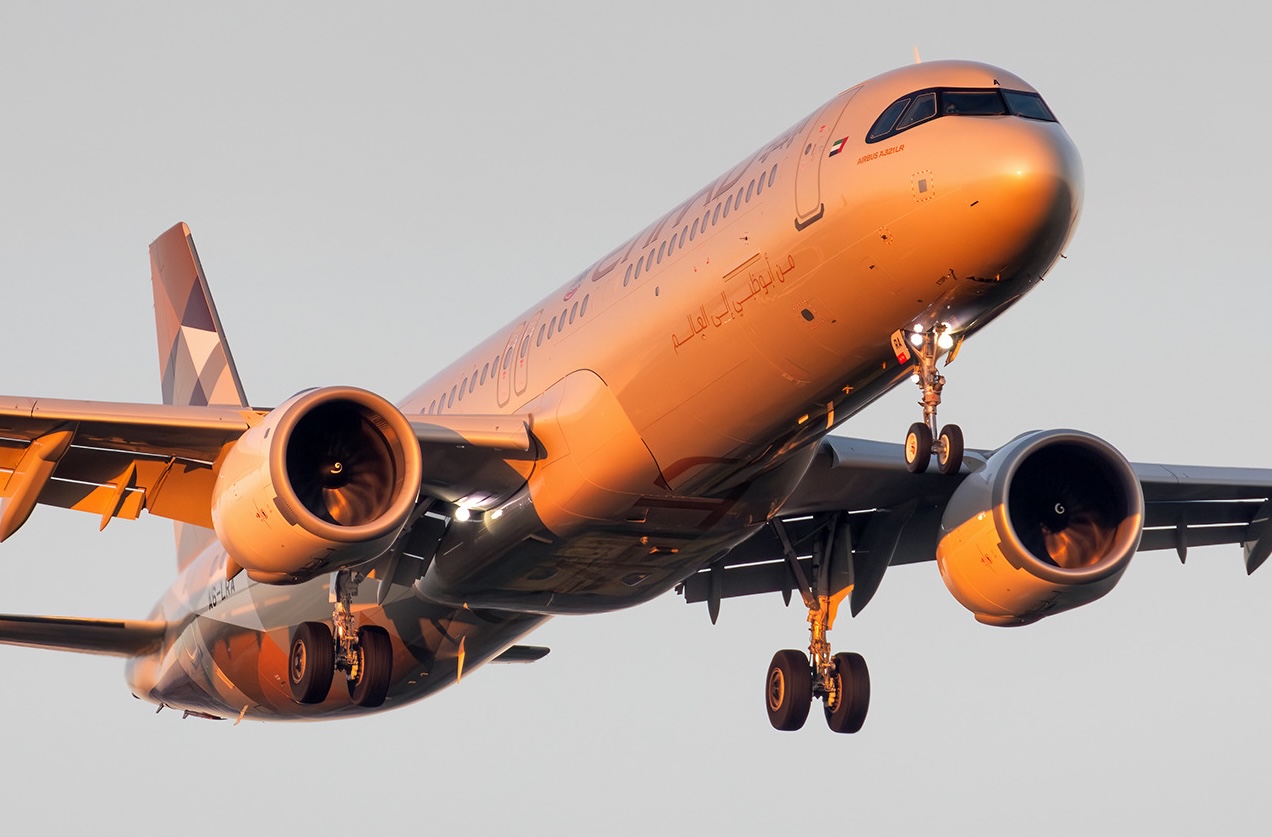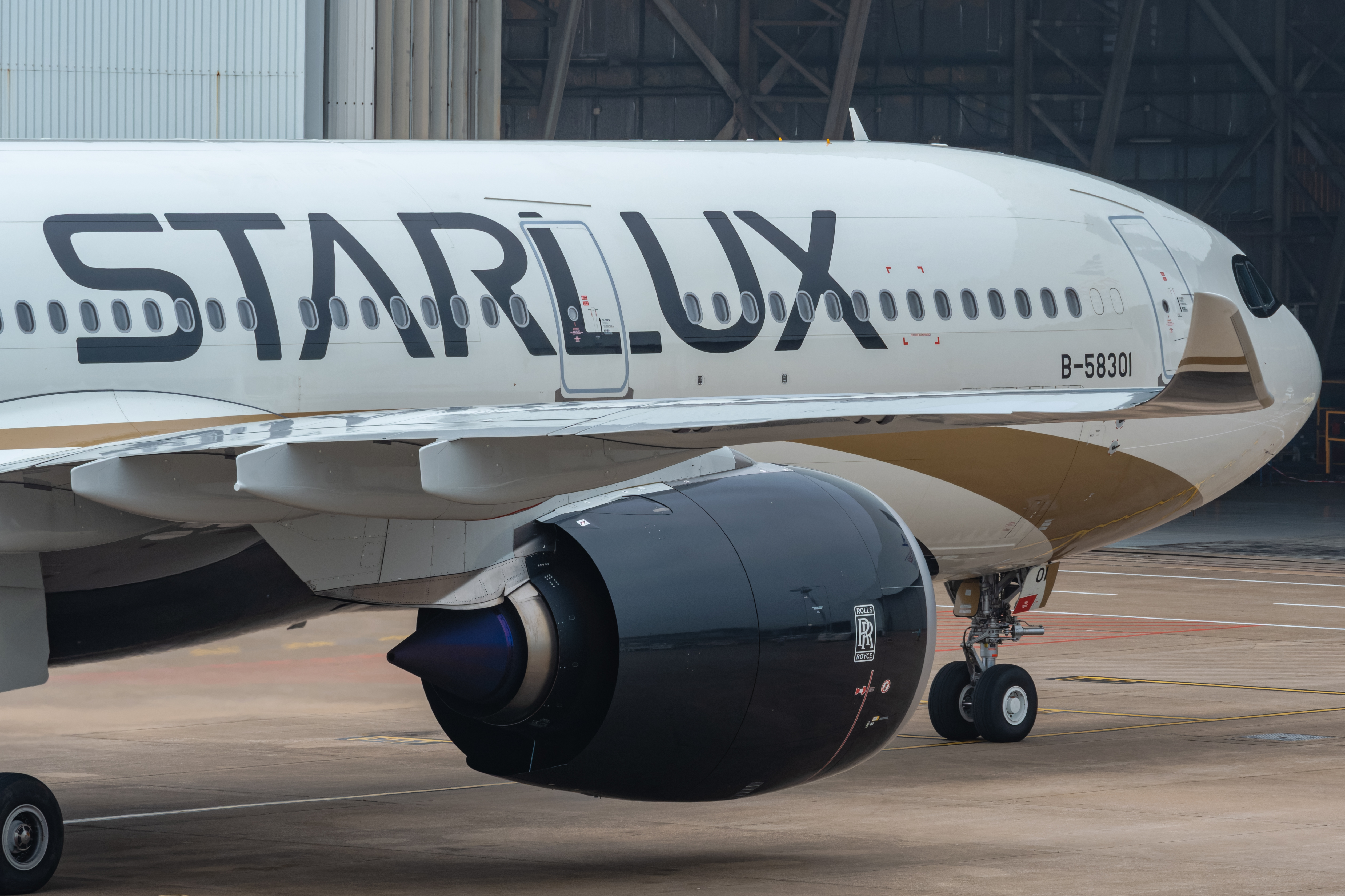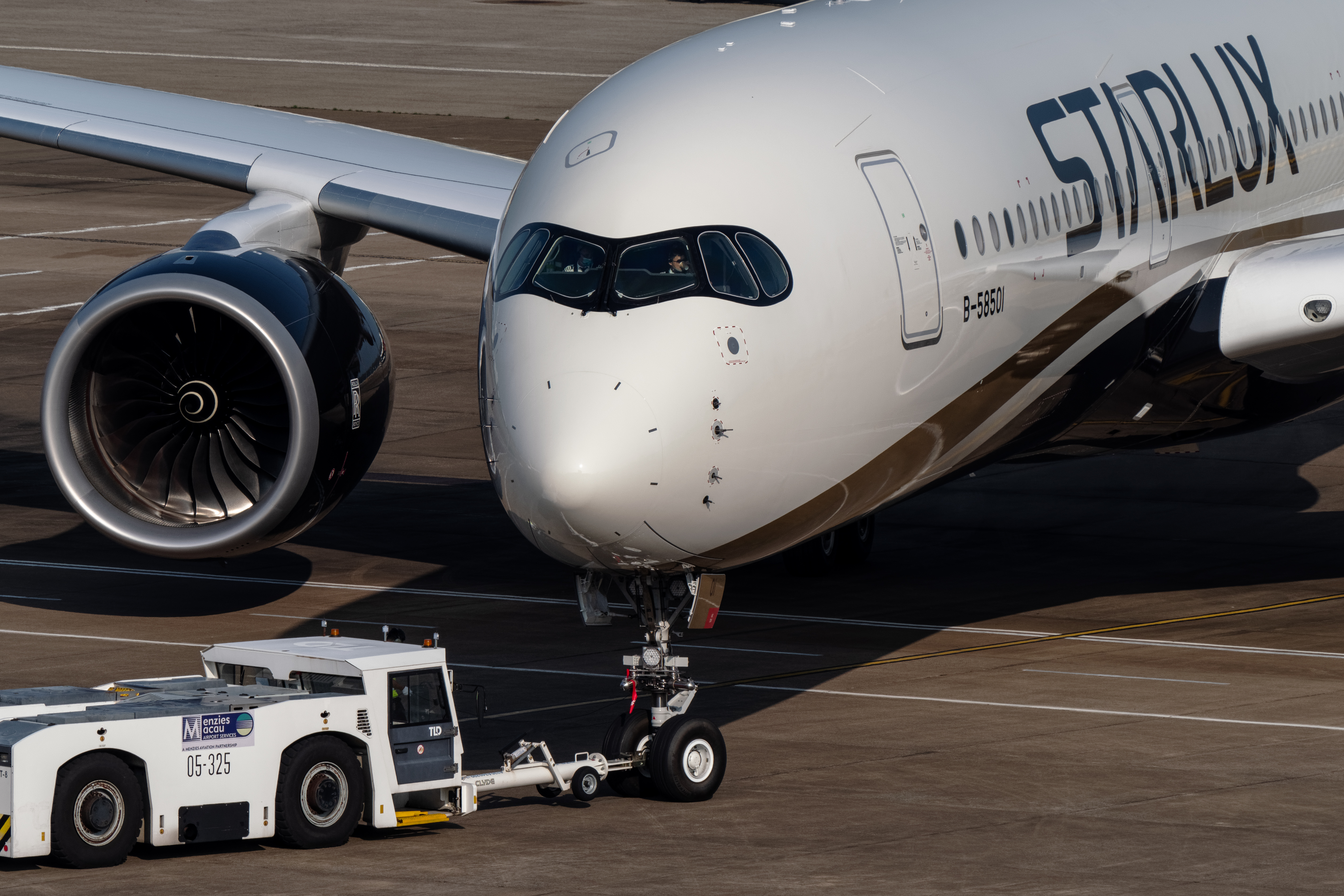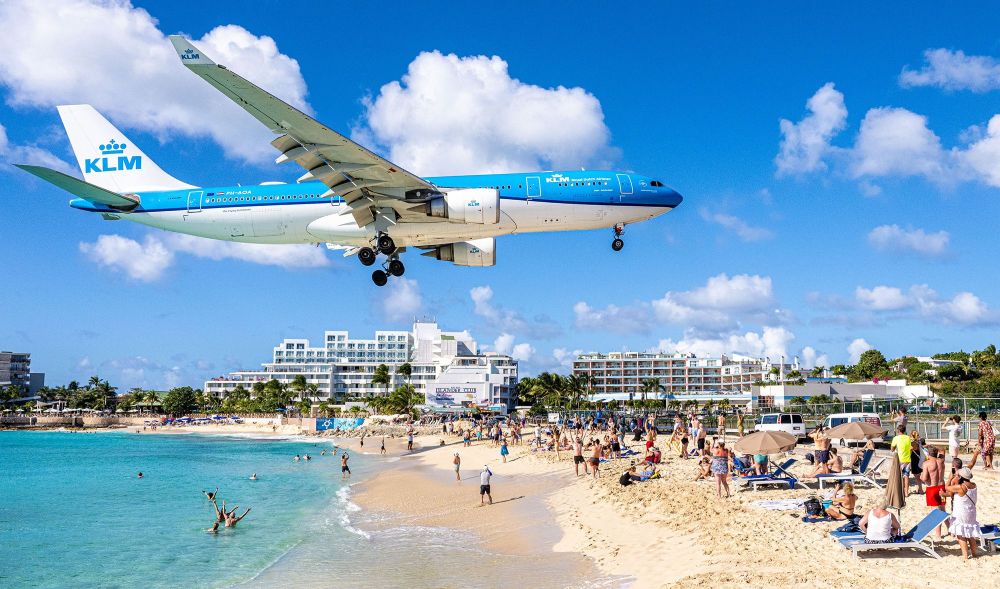
By Geoffrey Thomas
Published Sun Feb 21 2021
United Airlines suffered a near-identical Boeing 777 engine failure over the Pacific in 2018 to the one that occurred today in Denver.
According to Aviation Herald on Feb 13, 2018, the United 777 was en route from San Francisco to Honolulu with 363 passengers and 10 crew, and about 45 minutes from landing in Honolulu when parts of the right-hand engine's (PW4077) separated from the engine.
A passenger, Maria Falaschi, reported there was a loud bang about 45 minutes prior to a landing followed by the whole aircraft shaking, she saw parts of the engine cowl at the engine inlet missing.
https://www.youtube.com/watch?v=J2kHchd6XHw
On June 30, 2020, the NTSB released their final report concluding the probable causes of the incident were:
The fracture of a fan blade due to P&W's continued classification of the TAI inspection process as a new and emerging technology that permitted them to continue accomplishing the inspection without having to develop a formal, defined initial and recurrent training program or an inspector certification program. The lack of training resulted in the inspector making an incorrect evaluation of an indication that resulted in a blade with a crack being returned to service where it eventually fractured.
Contributing to the fracture of the fan blade was the lack of feedback from the process engineers on the fan blades the inspectors sent to the process engineers for evaluation of indications that they had found.
The NTSB described the sequence of events:
At the time of the event, there were three pilots on the flight deck: the captain, who was the pilot monitoring, the first officer (FO), who was the pilot flying, and a jump seat rider, who was an off-duty United Airlines 777 FO.
The flight departed SFO on time and the push back, taxi, takeoff, and climb were normal. The flight was about 120 miles from HNL at flight level (FL) 360 when there was a violent jolt and very loud bang that both pilots stated was followed by extreme airframe vibrations. The pilots reported that immediately after the jolt and loud bang, the autopilot disconnected, and the airplane began to roll to the right. A positive exchange of controls was accomplished with the captain becoming pilot flying. The pilots stated that about 15 to 30 seconds after the jolt and loud bang, the engine instruments indicated a failure of the number 2 engine. After accomplishing the Severe Engine Damage checklist, the crew shut down and secured the engine. The jump seat rider stated that after the right engine was shut down, the vibration subsided although the controllability of the airplane was not normal. The crew declared an emergency and began a drift-down descent to FL 230. The captain directed the jump seat rider to go back into the cabin to assess the condition of the engine. The jump seat rider noted that the engine was oscillating and that the cowling was missing. He took a video of the engine to show the captain and the FO what they were dealing with. The pilots reported that concurrently, the purser had come to the flight deck and the captain briefed her about the emergency and that they would be landing at HNL. The airplane continued to HNL and made a visual approach and landed on Runway 8R without further incident.
The NTSB analyzed:
The airplane, a Boeing 777-222, experienced a full-length fan blade fracture in the No. 2 (right) engine, a Pratt & Whitney (P&W) PW4077 turbofan, while in cruise flight shortly before the top of descent. The examination of the No. 2 engine revealed most of the inlet duct and all of the left and right fan cowls were missing. Two small punctures were found in the right side fuselage just below the window belt with material transfer consistent with impact from pieces of an engine fan blade.
The examination of the engine's fan blades revealed fan blade No. 11 was fractured transversely across the airfoil directly above the fairings that are between the base of each blade. The other fan blade, which was identified as fan blade No. 10 and was the adjacent trailing blade, was fractured across the airfoil at about midspan. Laboratory examination of fan blade No. 11 revealed a low cycle fatigue (LCF) fracture that originated on the interior cavity wall directly below the surface.
Also in December 2020, Aviation Herald reported that "a Boeing 777-200, operating flight JL-904 from Okinawa to Tokyo Haneda with 178 passengers and 11 crew, was climbing out of Okinawa when the left-hand engine (PW4084) failed and its access doors ripped off with huge noises prompting the crew to stop the climb at FL190 and return to Okinawa for a safe landing about 35 minutes after departure. The aircraft stopped on the runway and was subsequently towed to the apron."
Have questions or want to share your thoughts?
Get In Touch